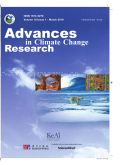- 钛学术文献服务平台 \
- 学术期刊 \
- 基础科学期刊 \
- 天文学、地球科学期刊 \
- 气候变化研究进展(英文版)期刊 \
Global climate damage in 2 ℃ and 1.5 ℃ scenarios based on BCC SESM model in IAM framework
Global climate damage in 2 ℃ and 1.5 ℃ scenarios based on BCC SESM model in IAM framework
基本信息来源于合作网站,原文需代理用户跳转至来源网站获取
摘要:
The quantitative functions for climate damages provide theoretical ground for the cost-benefit analysis in climate change economics, and they are also critical for linking climate module with economic module in the Integrated Assessment Models (IAMs). Nevertheless, it is necessary for IAMs to update sectoral climate impacts in order to catch up the advance in climate change studies. This study updates the sectoral climate damage function at global scale from climate Framework for Uncertainty, Negotiation and Distribution (FUND) model and develops the aggregate climate damage function in a bottom-up fashion. Besides conventional sectors such as agriculture, forestry, water resources, energy consumption and ecosystems, this study expands climate disaster types, assesses human health impacts caused by various air pollutants, and updates coastal damage by sea level rise. The Beijing Climate Center Simple Earth System Model (BCC SESM) is used to project climate system based on Business-as-Usual (BAU) scenario, and the 2 ℃ and 1.5 ℃ scenarios based on RCPs and SSP2 databases. Sectoral results show that the agricultural sector is projected to suffer 63%of the total damage, followed by water resources (16%) and human health (12%) sectors in 2100. The regression results indicate that the aggregate climate damage function is in positive quadratic form for zero discounting. Under BAU scenario, the aggregate climate damage is projected to be 517.7 trillion USD during 2011-2100. Compared to that, the 2 ℃ and 1.5 ℃ scenarios are projected to respectively reduce climate damages by 215.6 trillion USD (approximately 41.6%) and 263.5 trillion USD (50.9%) in 2011-2100.

推荐文章
Forest carbon storage in Guizhou Province based on field measurement dataset
Forest carbon storage
Field measurement dataset
Karst landform
Entity Framework浅析
EDM
ADO.NET
Entity Framework
编程员
Concentration-discharge patterns of weathering products from global rivers
Concentration-discharge
Rivers
Silicate weathering
Solutes
Entity Framework数据库访问
数据库
模型
代码
Entity Framework技术
内容分析
关键词云
关键词热度
相关文献总数
(/次)
(/年)
文献信息
| 篇名 | Global climate damage in 2 ℃ and 1.5 ℃ scenarios based on BCC SESM model in IAM framework | ||
| 来源期刊 | 气候变化研究进展(英文版) | 学科 | |
| 关键词 | |||
| 年,卷(期) | 2020,(3) | 所属期刊栏目 | Impacts of climate change |
| 研究方向 | 页码范围 | 261-272 | |
| 页数 | 12页 | 分类号 | |
| 字数 | 语种 | 英文 | |
| DOI | |||
五维指标
引文网络
引文网络
二级参考文献 (251)
共引文献 (19)
参考文献 (36)
节点文献
引证文献 (0)
同被引文献 (0)
二级引证文献 (0)
1928(1)
- 参考文献(0)
- 二级参考文献(1)
1956(1)
- 参考文献(0)
- 二级参考文献(1)
1962(1)
- 参考文献(0)
- 二级参考文献(1)
1977(1)
- 参考文献(0)
- 二级参考文献(1)
1987(1)
- 参考文献(0)
- 二级参考文献(1)
1991(4)
- 参考文献(0)
- 二级参考文献(4)
1992(5)
- 参考文献(1)
- 二级参考文献(4)
1993(5)
- 参考文献(0)
- 二级参考文献(5)
1994(3)
- 参考文献(0)
- 二级参考文献(3)
1995(8)
- 参考文献(2)
- 二级参考文献(6)
1996(9)
- 参考文献(2)
- 二级参考文献(7)
1997(6)
- 参考文献(1)
- 二级参考文献(5)
1998(8)
- 参考文献(3)
- 二级参考文献(5)
1999(9)
- 参考文献(0)
- 二级参考文献(9)
2000(9)
- 参考文献(1)
- 二级参考文献(8)
2001(5)
- 参考文献(1)
- 二级参考文献(4)
2002(9)
- 参考文献(0)
- 二级参考文献(9)
2003(13)
- 参考文献(1)
- 二级参考文献(12)
2004(6)
- 参考文献(0)
- 二级参考文献(6)
2005(8)
- 参考文献(0)
- 二级参考文献(8)
2006(13)
- 参考文献(1)
- 二级参考文献(12)
2007(11)
- 参考文献(2)
- 二级参考文献(9)
2008(6)
- 参考文献(0)
- 二级参考文献(6)
2009(20)
- 参考文献(3)
- 二级参考文献(17)
2010(4)
- 参考文献(1)
- 二级参考文献(3)
2011(6)
- 参考文献(0)
- 二级参考文献(6)
2012(16)
- 参考文献(0)
- 二级参考文献(16)
2013(18)
- 参考文献(3)
- 二级参考文献(15)
2014(22)
- 参考文献(2)
- 二级参考文献(20)
2015(19)
- 参考文献(1)
- 二级参考文献(18)
2016(18)
- 参考文献(1)
- 二级参考文献(17)
2017(12)
- 参考文献(4)
- 二级参考文献(8)
2018(6)
- 参考文献(4)
- 二级参考文献(2)
2019(3)
- 参考文献(1)
- 二级参考文献(2)
2020(1)
- 参考文献(1)
- 二级参考文献(0)
2020(1)
- 参考文献(1)
- 二级参考文献(0)
- 引证文献(0)
- 二级引证文献(0)
引文网络交叉学科
相关学者/机构
期刊影响力
气候变化研究进展(英文版)
主办单位:
国家气候中心
出版周期:
季刊
ISSN:
1674-9278
CN:
11-5918/ P
开本:
16开
出版地:
北京市中关村南大街46号国家气候中心
邮发代号:
创刊时间:
2010
语种:
eng
出版文献量(篇)
377
总下载数(次)
0
总被引数(次)
708
期刊文献
相关文献
推荐文献
- 期刊分类
- 期刊(年)
- 期刊(期)
- 期刊推荐
力学
化学
地球物理学
地质学
基础科学综合
大学学报
天文学
天文学、地球科学
数学
气象学
海洋学
物理学
生物学
生物科学
自然地理学和测绘学
自然科学总论
自然科学理论与方法
资源科学
非线性科学与系统科学
气候变化研究进展(英文版)2022
气候变化研究进展(英文版)2021
气候变化研究进展(英文版)2020
气候变化研究进展(英文版)2019
气候变化研究进展(英文版)2018
气候变化研究进展(英文版)2017
气候变化研究进展(英文版)2016
气候变化研究进展(英文版)2015
气候变化研究进展(英文版)2014
气候变化研究进展(英文版)2013
气候变化研究进展(英文版)2012
气候变化研究进展(英文版)2011
气候变化研究进展(英文版)2010

 免费查重
免费查重










